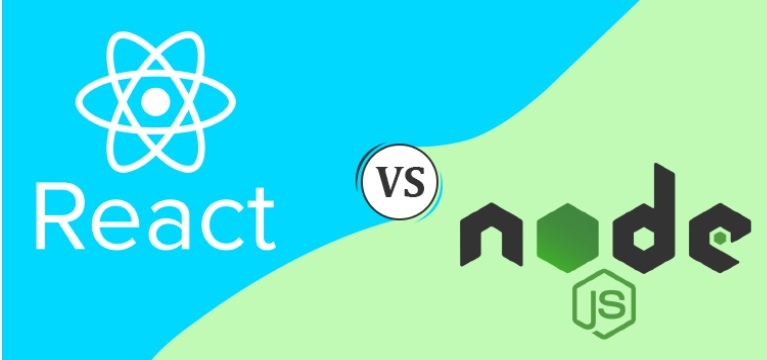The current digital ecosystem is quickly moving towards scalable, cross-platform, and high-performance application solutions by businesses. The need to have responsive mobile and web applications has resulted in the use of current frameworks and architectures that are easy to develop and maintain their development. The enterprise-level applications now constitute full-stack development frameworks, APIs and cloud integration. The modern trend among developers is to develop applications that are efficient, secure, and able to support big data and user traffic. In this way, it can be guaranteed that users have an ideal experience with the devices and platforms.
Learning Full-Stack Application Architecture
Full-stack application architecture is the approach to the development of the front-end (user interface) and back-end (server, database, and application logic). This architecture has offered one common place where developers can comfortably design, develop, test, and deploy applications. The front-end is used to guarantee the interactive and appealing user interface, whereas the back-end is used to manage data, to provide authentication, and business logic. A combination of these elements allows businesses to roll out applications at increased speeds and retain code consistency and scalability. The following are components that are common in modern full-stack architectures:
- Frontend Framework: deals with the client-side rendering and user interaction.
- Backend Framework: Processes server requests, data processing and APIs.
- Database Layer: It contains the organised or non-organised data and dynamic queries.
- API Gateway: Handles the interaction between the client and the server using safe endpoints.
- Cloud Integration: Cloud integration provides enterprise applications with scalability, security and performance.
Frontend Development
Frontend development focuses on building the user interface of applications using HTML, CSS, and JavaScript to create responsive, intuitive, and user-friendly experiences. Modern frameworks and libraries enable reusable components, state management, and efficient rendering. React Native, a popular cross-platform framework, allows a single JavaScript codebase to produce apps for both iOS and Android, saving time and costs while offering native performance. Its modularity and compatibility with existing native code make it ideal for startups and businesses seeking efficient, high-quality mobile app development.
Backend Development
One of the most popular backend technologies is the Node.js JavaScript runtime environment that enables developers to create server-side applications of high speed and scalability. It builds on event-driven and nonblocking I/O architecture, which is suitable for real-time applications, including chat systems, APIs, and streaming services. To further know about it, one can visit the Node Js Online Course. In addition, Node also maintains a vast library ecosystem, npm (Node Package Manager), and allows developers to develop and deploy powerful backend systems with ease.
Database Management and Data Flow
A database is a very fundamental component of the application since it stores information about the user, transactions and operations. In the current architectures, the developers use the integration of relational (SQL) and non-relational (NoSQL) databases depending on the business needs.
NoSQL Databases: MongoDB and Cassandra, which are suitable for high-performance and flexible unstructured data storage that is flexible. APIs determine the interaction between the part of the application and the database and guarantee the security and efficiency of information exchange.
The API Development and Integration
The front-end and back-end layers communicate through APIs (Application Programming Interfaces). APIs establish interactions between software components, allowing developers to build modular systems and ensure interoperability. Modern applications usually use RESTful or GraphQL APIs to facilitate efficient communication between the client and server. When designing APIs, developers consider authentication (OAuth 2.0, JWT), versioning, and security. By implementing a microservices architecture, organizations develop scalable, autonomous services that they can deploy and maintain individually, which enhances overall agility.
Security and Performance Optimisation
Security and optimisation of performance are the areas of fundamental applicability of the application. The creators ought to ensure that the front-end and back-end are secure against hacking, such as, cross-site scripting (XSS), SQL injection and the violation of information. The application can withstand by the introduction of the HTTPS protocol, encryption and secure authentication. To enhance speed and responsiveness, developers use performance optimization techniques such as lazy loading, server-side rendering, and code splitting. They also implement load balancing, caching, and database indexing on the server side to handle heavy traffic while maintaining a smooth user experience.
Continuous Integration and Deployment
After development and testing, the applications have to be deployed in an automated and controlled environment. Continuous Integration and Continuous Deployment pipelines (CI/CD) are critical in the automation of testing, version control, and deployment. Containers such as Docker and Kubernetes can be used to deploy platforms that are containerised, which gives consistency in various environments. The scalable infrastructure, automated monitoring and cost optimisation tools that cloud providers like AWS, Azure, and Google Cloud provide are an addition that streamlines the deployment lifecycle further.
Conclusion
It is more concerned with scalability, security and cross-platform compatibility in modern application development. By leveraging the use of effective architectures, strong backend frameworks, and solid frontend technologies, the developers can deliver a high-performing solution that is responsive to the needs of the businesses and is easy to use. Big IT centres such as Noida and Delhi present high-paying jobs to qualified professionals. Hence, you can get yourself started in this field by entering the Node js Training in Noida. React Native and Node.js are examples of frameworks that have made the development process so easy that the teams can now create unified and maintainable, and scalable applications faster and easier than ever before. With the ever-changing technology and use, these new tools and best practices will be critical in organisations that want to be part of the competition in the global digital world.



